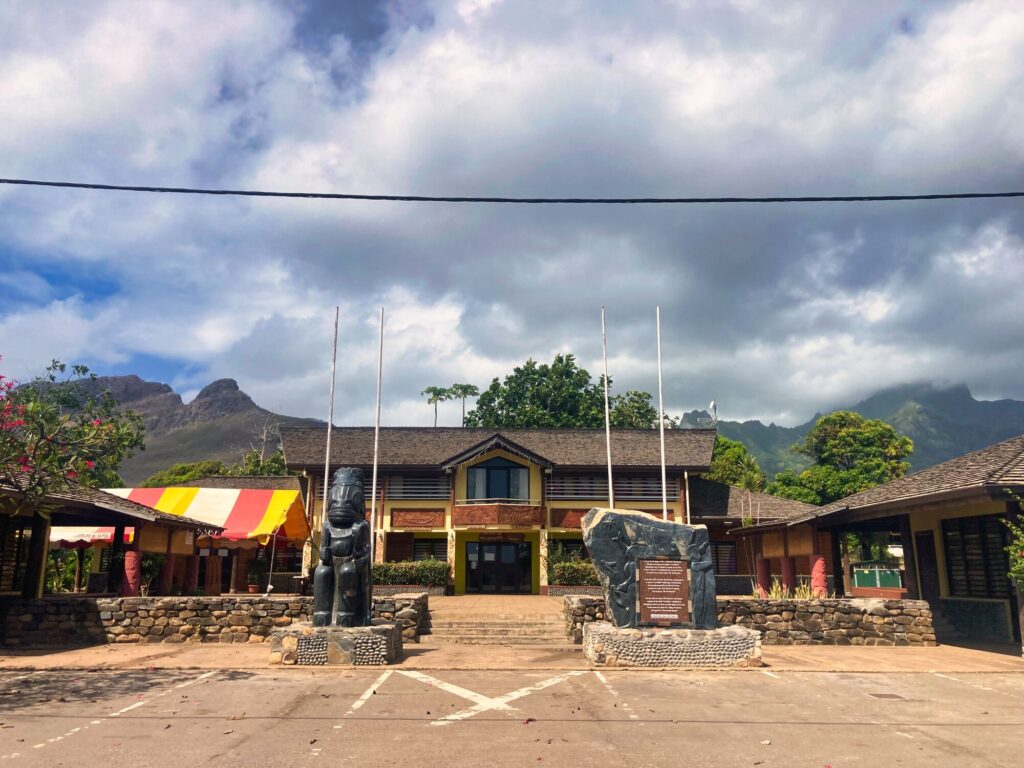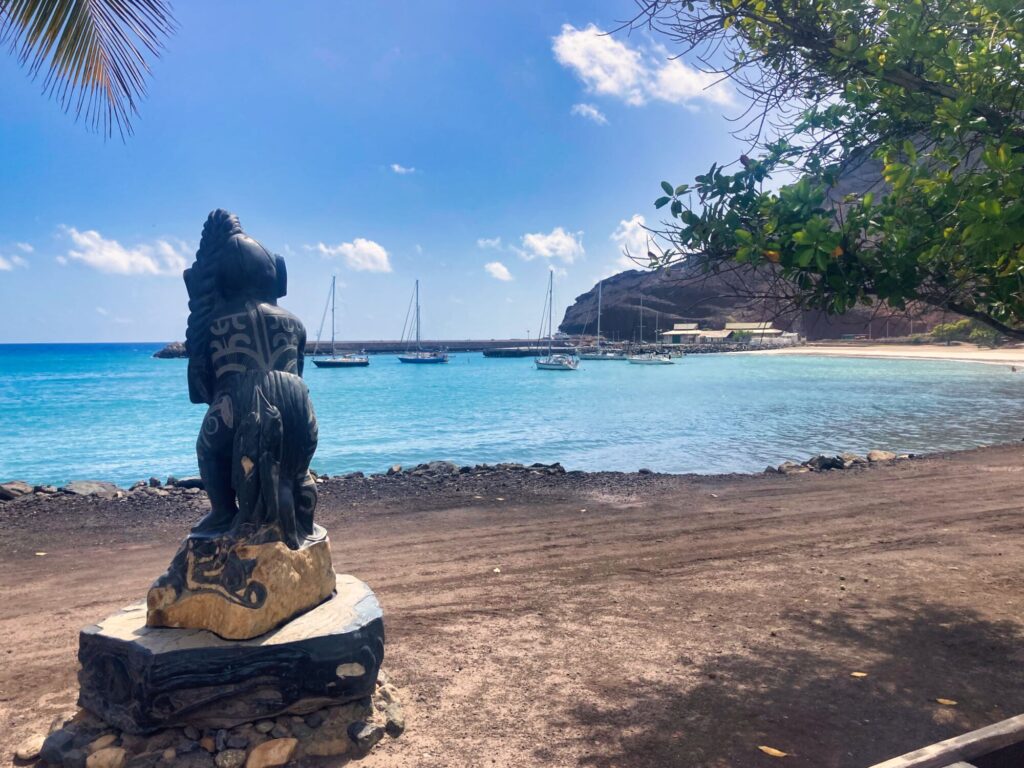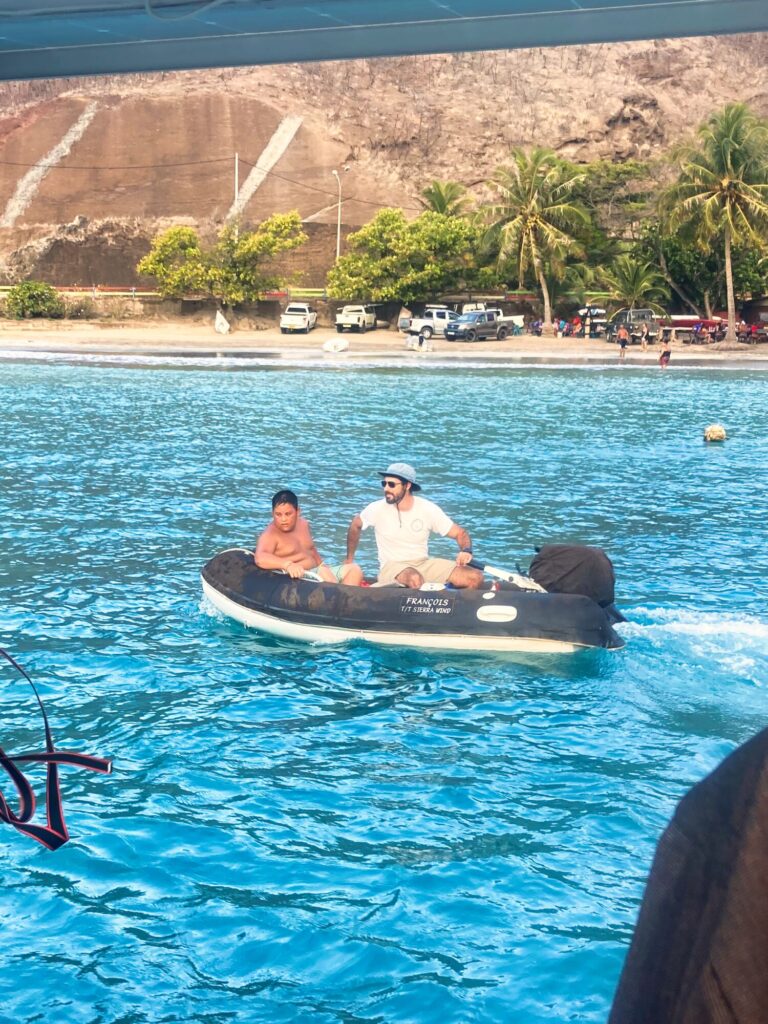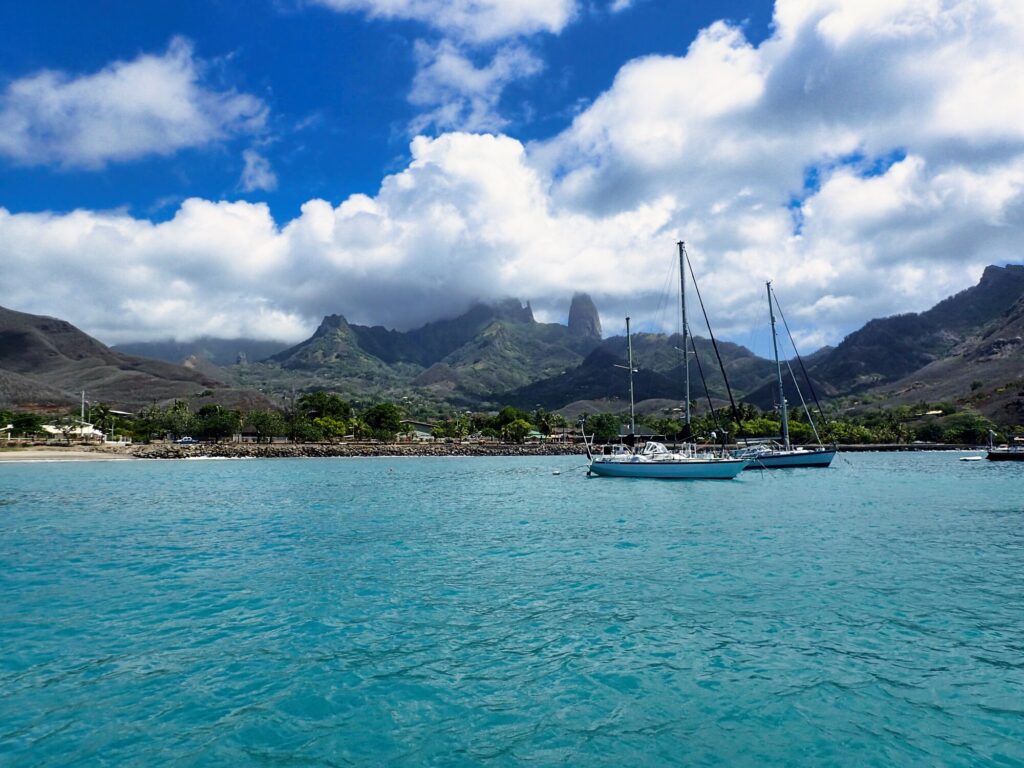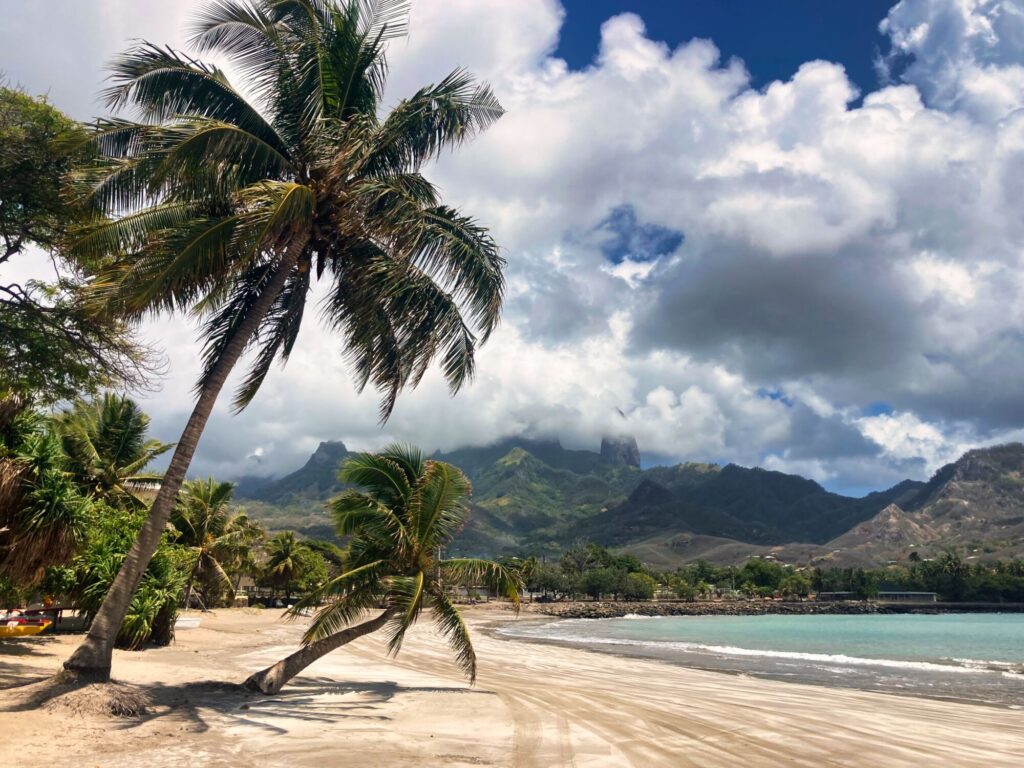It was a bumpy and wet upwind ride east to the next bay, but once again, we needed Wi-Fi to check weather and figure out when and where to go next. Despite being the main town on Ua Pou, the anchorage at Hakahau Bay was tiny and hardly able to accommodate the half dozen boats that were already at anchored. Once we pulled in, we saw a couple other boats trying to anchor but gave up and head to a neighboring bay instead. One boat decided to anchor and stern tie up to the dock, which seemed like a risky move since the supply ships don’t have a schedule and show up when they show up, sometimes using dinghies that are tied up to the dock instead of putting out their own fenders.
Since SV Sierra Wind has a shallow draft of only 5 feet deep, we are able to anchor in places most larger boats can’t. We tucked up almost onto the beach and threw out a stern anchor, then the main anchor, then a third anchor to protect us from any wind shifts that could push us towards the pier. I always like to joke that Eitan is a pro at advanced anchoring techniques. It’s increasingly rare these days that we only use one anchor to secure the boat and it always surprises me to hear most people we meet say they have never used a stern anchor, don’t know how to, or don’t even have one. Unless we are in a wide-open bay with a sandy bottom and no swell, it’s likely that we have more than one anchor out. It makes a huge difference in terms of comfort by being able to keep the boat pointed into the swell, instead of being rolled around by it. It also adds an additional level of security in case the wind changes direction. However, it doesn’t protect you from other boats not using stern anchors that can swinging into you, so we always have to watch our neighbors.
We headed into town to look for Wi-Fi and see what other services were available. Unfortunately, we forgot it was Saturday and most businesses are either closed for the day or close early. We managed to find a restaurant that was open for lunch and ordered whatever the special entrée of the day was. It turned out to be a strange combination of macaroni noodles, seaweed, pork, and a few other mystery ingredients accompanied by a side of rice. Despite the bizarre appearance, it was quite delicious, marking the second meal we had had onshore since the crossing.
Considering the food is expensive, that none of us can read the menu, and most people can’t speak any English, we tend to avoid dining out and opt for the easier option of cooking onboard. But we made an exception this time because the restaurant happened to have decent Wi-Fi, the best we found since arriving in the Marquesas (and all of French Polynesia as we would later find out). I was pretty excited by this and went to town downloading movies, TV shows, cookbooks, and podcasts and refreshing my Facebook and Instagram feeds like a compulsive, social media addict. It was exciting to use as much data as my little phone could receive.
Eventually, the restaurant closed and we headed back to the boat for the rest of the day and discovered we were in the middle of another island playground. It seemed the local children were using the pier as their personal soccer field, jumping into the water to retrieve any lost balls. I heard some shouting close to the boat and found one of the children at our swim latter. He pointed at a floating soccer ball about 100 feet away that continued to be blow farther and farther out towards entrance of the bay. Eitan hopped in the dinghy to retrieve the ball but the little kid didn’t seem satisfied and motioned for Eitan to take him back to the dock. So, Eitan helped him up into the dinghy and gave him a quick ride around the bay and back to the ladder at the side of the pier. Our little friend shouted out a loud “yaaahhhh whooooo” as the other children were hooting and hollering. Eitan did his best to make it clear this was a one-time favor and not an open invitation for joy rides around the anchorage.
The following day, we headed back into town for some more Wi-Fi access, grab a few provisions, and possibly some gasoline. The streets seemed to be void of any car traffic and full of women walking around in white dresses. We were a bit confused until we realized it was Easter Sunday and everyone was walking home from church. So, our expectations of camping out at a restaurant and using Wi-Fi again were crushed since nothing was likely to be open. We did manage to find a grocery store open so we were able to grab a few things and found another shop that could sell gas, just not on Sundays, and as before we were simply out of luck.
Fortunately, the Wi-Fi at the restaurant was still on despite the restaurant being closed. Eitan was able to get an updated weather download and it seemed our best time to leave Ua Pou and head to Hiva Oa and Tahuana would have been right at that moment, but early tomorrow morning was the next best option. Motoring upwind, the entire trip was going to suck, but it would only get worse if we waited any longer. It would be a 16-hour day so we decided to be up at 4AM to pull all three anchors and do our best to make it to Tahuata as fast as possible. We headed back to the boat to call it an early night, but just after dark our cabin was flooded with light. It seemed the supply ship had arrived and was busy offloading cars and cargo and I wondered what had happened to the boat that was tied to the dock just a couple hours before. We had seen its three occupants onshore earlier and I couldn’t blame them for assuming the ship wouldn’t arrive on Easter Sunday. I suppose you never truly know when the supply ships will get there. With that being nothing more than a passing thought, Eitan and I put on our eye masks and got ready for an early wake-up call.

